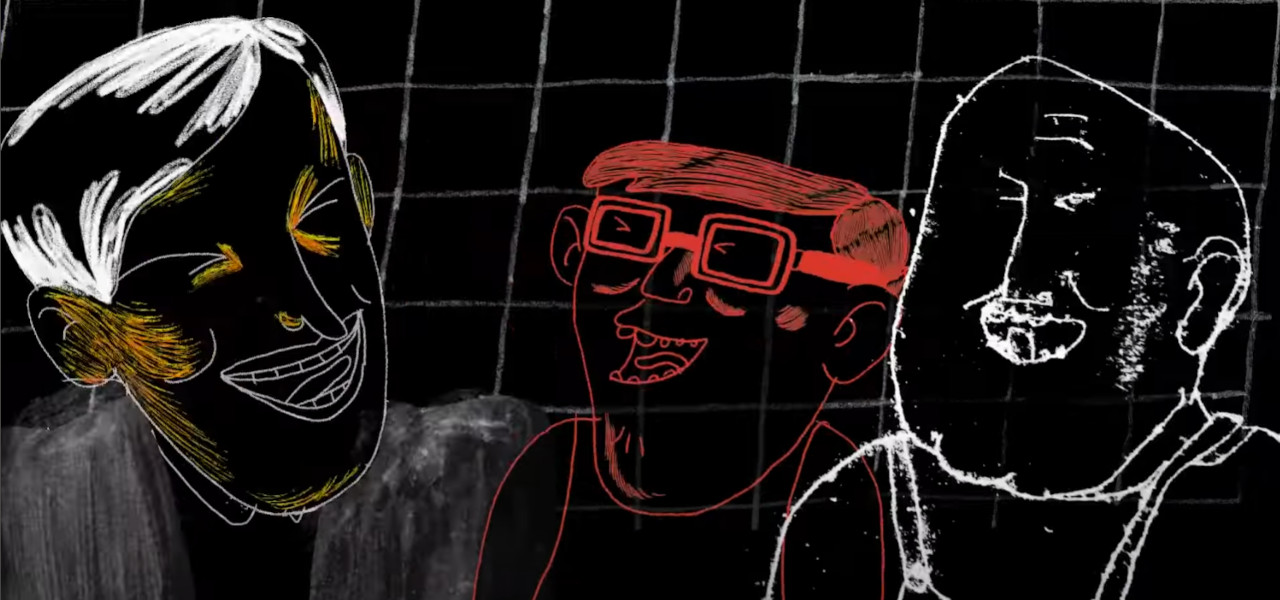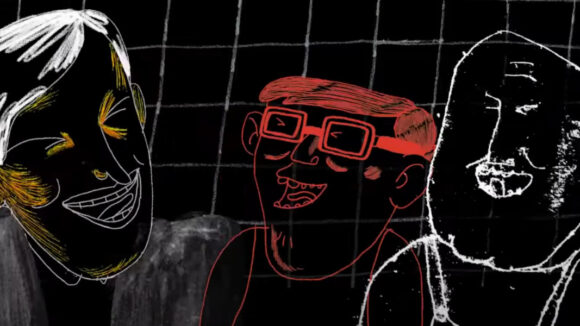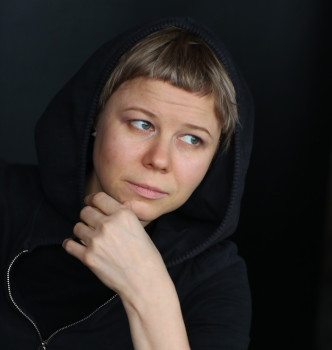

2024 Oscars Short Film Contenders: ‘Oneluv’ Director Varya Yakovleva
Welcome to Cartoon Brew’s series of spotlights focusing on the animated shorts that have qualified for the 2024 Oscars. There are several ways a film can earn eligibility. With these profiles, we’ll be focusing on films that have done so by winning an Oscar-qualifying award at an Oscar-qualifying festival.
Today’s short is Oneluv from France-based Russian filmmaker Varya Yakovleva, produced by Studio Shar. The film earned its qualification by winning the grand prix at Animafest Zagreb.
In Oneluv, strangers come to visit the home of a young couple. Taking advantage of the hosts’ hospitality, the unexpected guests push the couple to do rash things, which destroys the established order and harmony within the family. The disorder of the apartment and the unwelcome guests is reflected in the film’s inconsistent illustration style and by Yakovleva’s choice to leave in minor “imperfections” that magnify the abuses of the intruders.

Cartoon Brew: You’ve always been unafraid to include “errors” in your films. What advantages or challenges does embracing imperfection add to your creative process?
Varya Yakovleva: I started using this principle in my graphics, and it helped me find my style in illustration. After academic school, I let myself go and allowed myself to draw “wrong.” I got to know myself better, the specificity of my hand motor, and the visual shapes that are in tune with me. The same approach to directing animation helped me a lot. I believe that when we try to do something “right,” we are trying to do something similar to what we see as an example, emulating those we consider idols. But we all make mistakes in our own way, individually. Fear of making mistakes greatly inhibits progress and the creative process in general.
What was it about this story or concept that connected with you and compelled you to direct the film?
In the beginning, it was a strong impression of my dream. It was a dream about all my exes coming to my house for dinner, an eerie feeling when they all gathered with their own set of tensions. In the script, they turned into strangers invading the couple’s peace. And when I went into production, the story took on a different perspective. I focused on the subject of violence and resisting it. This mood seems to be in the air; it’s really visible in Russia. By showing fragments of violence I had experienced in my life, I was putting together a portrait of society in a patriarchal world. At that time, I was happy that I could finally speak openly about such things. But I think it was the last animated film that was not affected by censorship in Russia because, since the beginning of 2022, everything has changed very radically. Fortunately, I finished my film before that.
What did you learn through the experience of making this film, either production-wise, filmmaking-wise, creatively, or about the subject matter?
There was a lot of improvisation in production. Often, I didn’t know what character would appear in the next scene, what he would look like, or what technique the character would be drawn in. I did all the draft animation in TV Paint, then repeated the animation on paper and used different techniques: printing, pencils, paints, pens, whatever I could find on my desk. One day, my student knocked over a can of ink, flooding the whole workshop. But we were in such a great mood that we cleaned up the spilled ink by blotting it with paper. We got very beautiful textures, which I immediately included in the movie.
Can you describe how you developed your visual approach to the film? Why did you settle on this style/technique?
From the beginning, I wanted to feel free in terms of visual style and combining different techniques. I like to work with contrasting shapes, textures, and styles in my illustrations, using different lines, stains, and strokes. I thought that if the editing was comfortable, the audience would not pay attention to that. Characters change from scene to scene, but it is not noticeable and creates an additional sense of surrealism in what is happening. On the one hand, it was easy for me because I didn’t hold myself to any limits, but on the other hand, I still worked in my own style and felt as comfortable as possible.

.png)